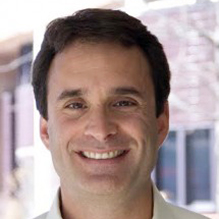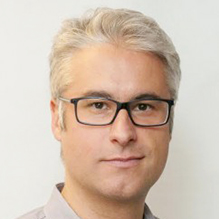2024/2025 & 2025/2026
Dr. Suzanne Baker - St Jude Children’s Hospital
Gap Junction-Mediated Cell-Cell Communications as Drivers of DIPG
Diffuse Intrinsic Pontine Glioma (DIPG) is an extremely invasive brainstem tumor. Recent research has revealed that DIPG tumor cells can be interconnected over significant distances through thin projections connecting the cells. These structures provide a conduit to relay signals throughout the tumor, such as cues that drive tumor growth or contribute to the tumor resistance to therapy. DIPG tumor cells may also receive key signals from the surrounding cells in the normal brain. We will develop model systems to study the long-distance network interactions among DIPG cells and between DIPG cells and normal cells. We will also introduce mutations into the model system that will disrupt the specialized structures that form connections between DIPG tumor cells. We will use these models to investigate the mechanisms through which tumor cell communication with other tumor cells and with normal brain cells influence tumor growth and invasion.
2024/2025 & 2025/2026
Dr. James Chen- Stanford University School of Medicine
Tumors are composed of multiple cell types with distinct proliferation rates and differentiation states. This cellular complexity poses a significant challenge in the development of cancer therapies, as most chemotherapies preferentially kill highly proliferative cells. Such treatments are often ineffective against slowly dividing stem cell-like populations, which can give rise to cancer recurrence, drug resistance, and metastasis. My lab has been exploring ways to eliminate cancer stem cells by exploiting their unique metabolic pathways. One hallmark of normal adult and cancer stem cells is their high expression of enzymes called aldehyde dehydrogenases (ALDHs), and individual ALDH isoforms have been associated with specific cancers. For example, ALDH1B1 is normally expressed in adult intestinal and pancreatic stem/progenitor cells, and it promotes tumor formation and progression in these organs. My research group discovered the first chemical inhibitors of ALDH1B1, and we are using these compounds to study ALDH1B1-dependent tumorigenesis and to pursue the development of ALDH1B1-targeting drugs.
The Rachel Molly Markoff Foundation first sponsored my research program in 2006 when I was a fledging assistant professor. Their funds helped launch my efforts to discover Hedgehog pathway modulators and evaluate their efficacy against medulloblastoma. Gift funds from Art in Giving subsequently enabled my lab to upgrade its microscopy instrumentation in 2014, and in 2017 the foundation supported our studies of ARHGAP36, an oncogene that is highly expressed in certain types of medulloblastoma. My graduate students, postdoctoral scholars, research staff, and I are grateful for Art in Giving’s continued support as we pursue this new research direction.
2023/2024 & 2024/2025
Dr. Oren Becher, Mount Sinai Kravis Children Hospital
I am extremely grateful to Art in Giving and the Rachel Molly Markoff Foundation for supporting our efforts to identify new targets to treat DIPG, an incurable brain cancer in children. We will be using an approach called CRISPR which allows scientists to delete genes and see how they impact cell growth. By looking at all 19,000 genes using both genetic and patient derived models, we will strive to identify new targets for future drug development efforts, specifically to target tumor cells that harbor the hallmark H3K27M mutation.
2022/2023
Dr. Suzanne Baker, St Jude Children’s Research Hospital
Diffuse intrinsic pontine glioma (DIPG) is a devastating brain tumor that arises in the brainstem and occurs almost exclusively in children. It has been shown for many different types of cancer that the environment surrounding a tumor, including different types of normal cells, blood vessels and proteins produced by the surrounding cells can significantly affect the ability of a tumor to survive, expand and spread. There is growing evidence that signals from neurons or nerve cells can promote brain tumor growth.
In our DIPG studies, we have been collaborating with Dr. Jiyang Yu, a computational biologist at St. Jude Children’s Research Hospital, who developed sophisticated approaches to evaluate candidates that may control how entire networks of genes are turned on or off. His approach has helped to discover therapeutic vulnerabilities for different types of cancer. Dr. Yu found that many of the candidates controlling gene networks in DIPG are known to be important in neuron signaling.
We are grateful to Art in Giving and the Rachel Molly Markoff Foundation for supporting our project to investigate whether targeting these candidate genes is important in neuronal signaling which could be an effective way to slow or stop DIPG growth.
2019/2021
“I am extremely honored and humbled to devote all my research and energy to these devastating tumors. I will always carry on this work, and it will never be forgotten that so much of this is in honor of your daughter Rachel. I promise you that I will give my very best to find a cure for patients like her. Please know that this gift is truly special to me and I am looking forward to updating you with our progress along the way. Thank you from the bottom of my heart. We can only win this fight together, and I truly believe we will. All my best,”
Mariella G. Filbin, MD, PhD
Co-Director for Research, Pediatric Neuro-oncology Program
Assistant Professor of Pediatrics, Harvard Medical School
Associate Member, Broad Institute of Harvard and MIT
We held the Inaugural Art in Giving Brain Cancer Research Forum in May 2019 in Cambridge, MA. Dr. Bradley Bernstein and Dr. Mark Kieran (two past Art in Giving grant recipients) were the co-chairs for the forum. The goal of the forum was to bring together top multi-disciplinary researchers from diverse institutions to foster cross team research, to achieve new therapeutic approaches and cures in Diffuse Intrinsic Pontine Glioma (DIPG). The forum was a great success and brought together investigators from academic institutions throughout the country, including St Jude Children’s Hospital, New York University, Dana Farber Cancer Center, McGill University and Mass General Hospital. The forum generated many new research ideas and led to funding of a research project entitled “Dissecting the immune-microenvironment in diffuse intrinsic pontine glioma” led by Dr. Mariella Philbin (Dana-Farber) and Dr. Suzanne Baker (St. Jude). This proposal brings together researchers from multiple institutions and has the unique opportunity to identify novel treatment for DIPG. DIPG are devastating diseases that are almost universally fatal within a few years after diagnosis. To date, treatments have demonstrated at best short-term efficacy, yet there is hope that immunotherapy will revolutionize the field. This proposal will define relevant tumor-immune interactions that will further our understanding of pediatric brain tumors and pave the road for developing next generation immune therapies that can overcome the current limitations of primary and secondary resistance to immunotherapy.”
Vicky Richon, Chair of Scientific Advisory Committee, board member
“The generous funding from Art in Giving will allow us to ask fundamental questions of immune regulation in DIPG and pave the way for novel immune therapies. We are incredibly grateful for the support and excited about the foundational knowledge we can build with this grant.”
—Dr. Mariella G. Filbin, MD, PhD- Assistant Professor of Pediatrics, Harvard Medical School and Associate Member, Broad Institute of Harvard and MIT
Dr. Suzanne Baker
St Jude Children’s Hospital
Dr. Mariella Philbin
Dana Farber Cancer Center
2018
Jaime Chu, MD
Assistant Professor of Pediatrics, Division of Hepatology, Icahn School of Medicine at Mount Sinai
A defining hallmark of glioblastoma cells is their ability to alter cell metabolism to evade cell death and escape most available therapies. We have yet to fully understand the fundamental mechanisms of how brain cancer cells regulate these metabolic pathways to fuel unrestricted cell growth. Our understanding of cancer metabolism has largely focused on the utilization of glucose. However, emerging evidence from both our lab and others is uncovering mannose metabolism as an overlooked regulator of metabolic reprogramming essential to driving cancer cell survival and proliferation. Our work aims to uncover new roles for mannose metabolism in glioblastoma cell growth, and ways to manipulate these pathways in order to improve efficacy of radiation therapy and treatment outcomes for children with glioblastoma.
2017
Targeting the glioma immune environment by creating tertiary lymphoid organs (TLOs)- Dr. Hideho OkadA
The absence of lymphatic organs and professional antigen presenting cells are thought to be two major causes for insufficient immune responses in the brain. Although TLOs have not been reported in brain cancers, in patients with autoimmune disorders of the brain, ectopic formation of TLOs in the brain has been reported. Based on our previous studies showing that intra-tumoral injection of type-1 DCs enhances T-cell homing and functions in gliomas13,16-18 and induces TLO-like structures in mouse sarcoma and colorectal cancer,4 we will develop novel and feasible methods of TLO induction in mouse glioma models using type-1 DCs as the vehicle for delivery of TLO-inducing factors.
James K. Chen, Ph.D.
Professor and Chair, Department of Chemical and Systems Biology, Stanford University School of Medicine
Our work focuses on the molecular mechanisms that promote the onset and progression omedulloblastoma and the pharmacological inhibition of these processes. We recently identified ARHGAP36 as an oncogene that is highly expressed in certain types of medulloblastoma and may contribute to tumor recurrence. With the support of the Rachel Molly Markoff Foundation, we are now investigating how ARHGAP36 promotes tumorigenesis, including which regions within ARHGAP36 are essential for its function and which proteins interact with ARHGAP36 to activate oncogenic pathways. We are also pursuing the development of small molecules that bind directly to ARHGAP36 and block its activity. Our studies will provide new insights into the biochemical mechanisms that drive medulloblastoma and advance efforts toward effective therapies for this pediatric brain cancer. Link to a letter from Dr. Chen indicating the impact of the grant received.
2016
We funded four research proposals in 2016. All the proposals come from outstanding institutions involving laboratories and investigators who are renowned for their work in brain tumors and immunology. The proposals look at very different mechanisms and approaches yet use some similar technologies that will allow future collaborations among the laboratories and investigators.
The proposal from New York University, made by Drs. Snuderl and Possemato, focuses on finding novel targets against pediatric brain tumors. They combine their respective labs and use various approaches, including looking at the interactions between the genes, epigenes and the cell metabolism, to find these novel targets.
The second proposal comes from Dana Farber Cancer Institute and was made by Dr. Kieran as a continuation of his work from last year and will focus on hunting for genes that are “turned on” that confer resistance to standard therapies in a rare pediatric brain tumor, diffuse intrinsic pontine glioma (DIPG). By finding these genes, Dr. Kieran can then focus on ways to target these genes and reinstate sensitivity to standard anti-cancer therapy.
The third proposal that was funded comes from the laboratories of Drs. Bernstein, Batchelor and Suva at the Massachusetts General Hospital, who are directing their research on cancer stem cells that confer resistance to treatment. Their research efforts are focused on the Notch pathway and will use a multipronged approach to understand if inhibiting this pathway can kills the cancer stem cells.
The final proposal comes from Dana Farber Cancer Institute by Dr. David Reardon and will be the continuation of the work funded last year by Art in Giving and The Rachel Molly Markoff Foundation. His work will be extending the initial work that evaluated inhibition of brain tumors using therapies directed at the immune system and will now focus on better understanding the critical factors that drive response to these agents as well as mechanisms of resistance.
Written by Debasish Roychowdhury, MD.
2015
David Reardon, MD
Clinical Director, Center for Neuro-Oncology
Associate Professor of Medicine, Harvard Medical School
Funding provided by the Rachel Molly Markoff Foundation will support my laboratory efforts aimed at utilizing the immune system to eradicate brain cancers. Our work focuses on high-grade gliomas, an incurable primary brain tumor that affects both pediatric and adult patients. Glioblastoma and diffuse intrinsic pontine glioma are two deadly variants of high-grade glioma that respond transiently at best to currently available therapies. Innovative treatment strategies are desperately needed to improve outcome for patients with these tumors.
Our research efforts focus on optimizing combinatorial treatments that utilize the immune system (the natural defense system of the body) to recognize brain cancers as foreign and attack them. Many tumors including brain cancers have evolved highly sophisticated mechanisms to shield or cloak themselves from attack by the immune system. Our therapeutic approaches aim to overcome these protective, self-preservating mechanisms exploited by tumors. If successful, our interventions offer the promise of not only killing existing tumors, but also then preventing their future relapse based on the memory capability of immune sensitization. Dramatic and durable tumor responses have been seen in other challenging solid tumors utilizing these approaches. Although significant challenges exist in developing these treatments for brain cancer patients, our research efforts, supported by the Rachel Molly Markoff Foundation, are working to overcome these challenges and help realize the truly exciting potential offered by these novel therapeutic strategies.
Mark W. Kieran, MD, PhD
Director, Pediatric Neuro-Oncology Center
Associate Professor of Pediatrics, Harvard Medical School
Significance of proposed research to brain cancer patients: Current brain cancer therapy induces apoptotic (dying) tumor cells and cell debris. We have determined that conventional chemotherapy can contribute to tumor progression as the debris of killed cancer cells stimulates tumor growth. In medulloblastoma, radiation and cisplatin based chemotherapy may therefore be a double-edged sword: the more effective they are at killing tumor cells, the more tumor stimulating factors are released. There is a natural process that stops this from happening, using a series of molecules called ‘resolvins’. We have identified these molecules are normally expressed in the brain and turned off by the tumor. In this research proposal, we will activate the natural debris-clearing process using resolvins, a natural product of the tissue that normally serves to end the inflammatory process to evaluate whether they can prevent the tumor-stimulating effect of dead cancer cells caused by current cancer therapies for brain tumor patients. These proposed studies would open an entirely new domain of brain tumor research. We expect that resolvins will exhibit minimal toxicity as they are already found in all tissues, including the brain and spinal fluid. The overall patient impact is potentially far reaching because recurrence or progression of medulloblastoma is rarely curable. Resolvins may allow us to reduce the toxic effects of current chemotherapy or radiation treatment regimens in medulloblastoma and have the potential for use in the treatment of other brain tumors such as malignant gliomas and diffuse intrinsic pontine gliomas. This pre-clinical characterization of resolvins is potentially paradigm-shifting and will guide us in determining the optimal way to use resolvins in treating human brain cancer.
Previous Recipients
James K. Chen, PhD
Stanford University
Dr. Chen is studying the development of next-generation chemotherapies, specifically novel Hedgehog pathway antagonists, as potential medulloblastoma therapeutics. Conventional treatments of medulloblastomas in children are associated with high rates of recurrence, metastasis, and permanent disability. Selective pathway antagonists resulting from these studies will further future investigations of the Hedgehog pathway and the development of new therapies for this deadly cancer. Here is a letter from Dr. Chen (PDF) giving thanks for the Foundation’s funding that is much needed for cancer research.
Todd Golub, MD
Broad Institute
One priority of the Broad Institute is to compile a complete molecular description of cancers. A systematic analysis of these alterations across all tumor types will enable a deeper understanding of cancer and it promises to revolutionize how cancers are classified, diagnosed, and treated. Specially, the Foundation grant will enable the lab accelerate its ability to profile the activity of cancer causing proteins and tyrosine kinase in tumor cells and to extend the profiling to new and other types of proteins.
Adrienne C. Scheck, PhD
Barrow Neurological Institute
Dr. Scheck’s lab her current research is to identify novel genes involved in this resistance through the use of a variety of molecular biology techniques, and to identify molecular markers for the diagnosis and prognosis of gliomas and meningiomas.
Michael C. Jensen, MD
Director, Ben Towne Center for Childhood Cancer Research
Dr. Jensen’s lab researched the genetic engineering of T-cells that might be deployed to target high grade glioma brain tumors.
Charles Eberhart, MD, PhD
Johns Hopkins University
Dr. Eberhart‘s laboratory was focused on understanding the molecular basis of medulloblastomas.
Myrna R. Rosenfeld, MD, PhD
University of Pennsylvania
Dr. Rosenfeld’s research was on “Novel Approaches to Angiogenesis Inhibition in Experimental Glioma.”
Allen E. Bale, MD
Yale University School of Medicine
Dr. Bale’s research was on “The Hedgehog Pathway in Medullablastoma.”
Daniel W. Fults, MD
University of Utah School of Medicine
Dr. Fults’ project was “Somatic Cell Gene Transfer to Model Medullablastoma.”
James Waschek, PhD
University of California Los Angeles
Dr. Waschek is utilizing genetically engineered mice to study the role of STAT3 in medulloblastoma immune evasion. Model systems are created to mimic the molecular, cellular and biological characteristics of human tumors in order to better understand the tumor biology and test therapies.
Robert Wechsler-Reya, PhD
Sanford-Burnham Institute
Dr. Wechsler-Reya works on pediatric brain tumors to gain a better understanding of how these tumors develop, with the ultimate goal of discovering more effective therapies against these cancers.


























